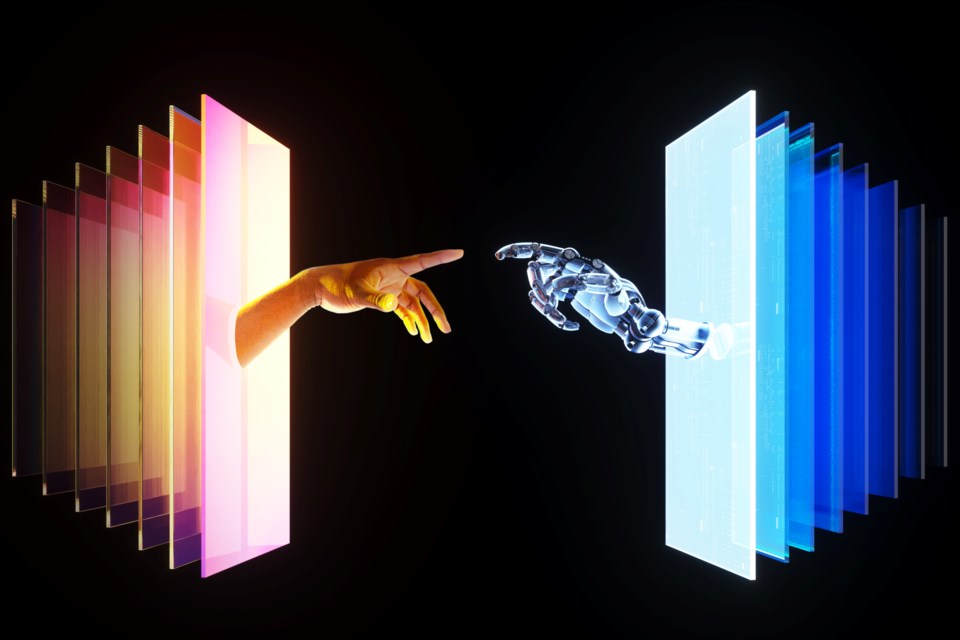Artificial Intelligence (AI) could make college essays obsolete in the 21st century, but one business believes professors should incorporate the technology to help eliminate cheating and provide more honest assessments.
North American-based company EXAMIND recently held an online webinar entitled “From Detection to Transparency: Authentic Assessment for the Post-AI World.” The company combines teaching experience, modern pedagogy and technical innovation to help instructors save time, reduce student cheating and deliver authentic assessments in today’s AI-driven world.
The goal of a university should be to teach students how to think critically so they can succeed in their careers and life, said Gonzalo Tudela, CEO and founder of EXAMIND. Therefore, professors should focus on transferring knowledge and assessing where students are with that information.
“Sometimes we get so focused on trying to keep things with high integrity or kind of stop students from doing things that we miss that fundamental core component,” he stated.
Tudela believed a recent paper by top management firm Boston Consulting Group illustrated the benefits of incorporating this technology into everyday use.
The company performed a controlled study where seven per cent of its workforce used the AI program ChatGPT in their daily work. The results showed that 12.2 per cent of consultants completed more tasks and had higher output, 25.1 per cent finished their work faster, and 40-per-cent more had higher work quality.
“… this to me, definitively says that in education, we not only have to embrace ChatGPT and embrace AI, but also we have to bring it into our assessments because using AI is critical thinking,” Tudela said, noting ChatGPT is becoming a workplace productivity tool similar to Excel and Word.
Post-secondary institutions may consider using AI tools to detect whether students are plagiarizing or having AI programs write their essays, but this is a “punitive approach” since it focuses on students’ actions, he continued.
Focusing on accuracy can also be a “red herring” based on the types of AI detection tools out there, Tudela said, before giving three examples of students using AI to write a paper.
In two examples, students used ChatGPT for research, to generate arguments, create the paper’s outline and produce the first draft. However, they wrote the essay in their own words and used Grammarly to correct spelling mistakes.
Therefore, a detection program would determine there is no AI-generated text.
In the third example, a student conducted research using books and journals, created original arguments and wrote a first draft in his own words. However, he pasted the essay into ChatGPT and told it to correct it for spelling and grammar before submitting it.
Therefore, the detection program determined there is AI-generated text.
These examples highlight the flaw universities have when thinking about needing to increase content accuracy because more accuracy does not equal more integrity, said Tudela.
He didn’t think AI-detection tools contributed to helping students think critically, while there was nothing authentic about determining what students wrote. Moreover, the final essay submission is all professors see and not students’ research or revisions.
“In fact, in engineering, we call this a single point of failure,” he stated. “If we screw up in this one area, then the whole thing collapses. … the goal is to move away from detection and … toward transparency.”
The EXAMIND CEO discussed a program his company has created that lets students use ChatGPT for projects and tracks everything they do in a type of “walled garden” program. Professors can then review — and watch — every step their pupils take and ask questions to understand the youths’ thinking.
He then showed a video comparing the actions two students took to create a paper while using ChatGPT to assist their work.
Tudela noted that reviewing students’ prompt histories in the program creates a “fundamental shift” since professors can see pupils’ efforts and work. It also unlocks learning opportunities and productive conservations between the student and professor.




